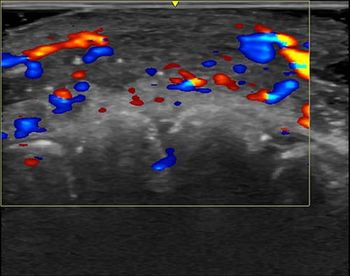
Report from SCAR: Patient CD-ROMs pose problem for PACS
Over 10% of the image CDs patients bring from one hospital facility to another cannot be transferred onto a PACS, according to a study from the University of Texas M.D. Anderson Cancer Center.
Over 10% of the image CDs patients bring from one hospital facility to another cannot be transferred onto a PACS, according to a study from the University of Texas M.D. Anderson Cancer Center.
A poster presentation at the Society for Computer Applications in Radiology meeting in Orlando outlined the facility's experience dealing with outside images brought in by patients. The study covered a time period from July 2004 through May 2005.
Researchers led by Dr. Kevin McEnery, an associate professor of radiology, were able to load 1429 of 1641 discs, or 86.5%, into their PACS using an in-house software program designed to grab outside images from CDs. Patient CDs came from 49 states in the U.S., the District of Columbia, Puerto Rico, and 43 countries around the world.
Sixty percent of the rejected discs contained data that had been saved in a proprietary image data format that basically prevented any images from being viewed or pushed to the PACS.
The remaining 40% of the rejected discs contained commercial imaging formats such as JPEG and TIFF files. While these images could be viewed on a PC or a Web browser, they could not be seen as medical images and could not be ported to the PACS.
The investigators also studied the Integrating the Healthcare Eneterprise's portable data imaging integration file. They obtained 19 demonstration discs from the 2004 RSNA conference and successfully transferred all images from these discs to the PACS.
One problem posed by the variety of image CD-ROMs in circulation is the number of different ways in which they are labeled. For the study, these methods included:
- 42.1% silk-screened discs
- 38% handwritten (with Sharpie markers)
- 8% automatically labeled by the CD-ROM-producing software
- 11.1% unlabeled
With the various labeling methods, the investigators could not determine the origins of the handwritten and blank discs. These could have been produced by the originating hospital, or they could be copies made by the patients themselves.
Because a relatively significant number of CDs they received contained no DICOM data, the researchers recommended that centers that create these CDs instead of film should make sure that the imaging data is in the nonproprietary DICOM format.
For more stories from the Society for Computer Applications in Radiology meeting, go to the
Newsletter
Stay at the forefront of radiology with the Diagnostic Imaging newsletter, delivering the latest news, clinical insights, and imaging advancements for today’s radiologists.




























